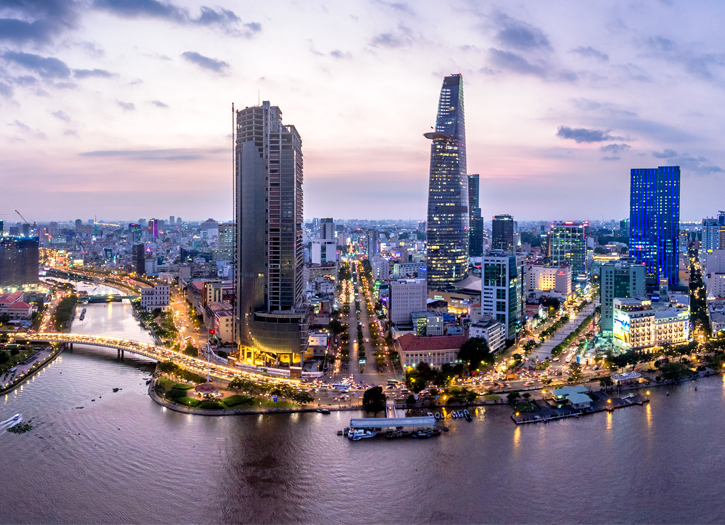As of 5 October 2020, the country had 1,097 confirmed cases, 1,022 recoveries, and 35 deaths. More than one million tests have been performed. Da Nang, as of October is the most-affected city with 394 confirmed cases and 31 deaths. Vietnam is cited by global media as having one of the best-organized epidemic control programs in the world.
Despite inferior economic and technological capacities, the country’s response to the outbreak has received acclaim for its immediacy, effectiveness and transparency. On 14 March 6 cases were announced (numbers 48 to 53). Aside from cases related to flight VN0054 and patient 34, there are 3 unrelated cases: A Vietnamese came back from Paris, a Vietnamese overseas student who has been travelling across Europe, and a Czech national. After the central government considered that the COVID-19 outbreak has been brought under control, on 7 September, Da Nang has decided to ease its social distancing restrictions. All passenger transportation and business enterprises can resume operations normally.
Like most of the world’s economy, Vietnam was hit hard by the outbreak because of the slowdown of private and national industries, the downturn of stock exchanges, and the lower number of incoming tourists, making hundreds of thousands people struggling to find jobs and are relying mostly on unemployment benefits to survive. However, Vietnam’s economic growth is expected to be higher than the Asia average of 2.2%. Despite the deceleration in economic activity and the downside risks posed by the pandemic, Vietnam’s GDP growth rate is still to remain one of the highest in Asia-Pacific Region, according to Asian Development Bank report.
The Ho Chi Minh Stock Exchange (HOSE), on which the VN-Index is based, has lost around 30% in value since the beginning of the year until the end of March and reached its lowest level since January 2017. According to the Private Economic Development Research Board survey of 1,200 enterprises, 26.2% of the company will go bankrupt if the pandemic lasts for 6 months, nearly 30% lose 20–50% of revenue, 60% lose more than half of revenue. Vietnam Industry Agency says industry manufacturing processing is in short supply of raw materials leads to the risk of stopping many factory operation.
The Ministry of Labour, Invalids and Social Affairs said the number of people filing for unemployment in May 2020 surged 44% year-on-year to 157,900. In the first five months 26,000 companies suspended their business. In the worst-case scenario, the number of workers affected by the pandemic could rise to 7.2 million in the second quarter, the ministry estimated.The Vietnam General Statistics Office said export turnover reached US$99.36 billion, down 1.7% year-on-year. Meanwhile, import value reached US$97.48 billion, down 3%, Vietnam’s exports to the EU and ASEAN fell 12% and 13.4%.
Tourism industry is the most severe affected, Civil Aviation Authority of Vietnam said the aviation industry is in the worst situation in 60 years of development. Of the 234 Vietnam registered aircraft, more than 200 were grounded while airlines still have to spend hundreds millions dollars to maintain operations such as: aircraft leasing cost, paying for employee, aircraft maintenance and apron parking fee. Vietnam Airlines estimates its 2020 revenues could decline by US$2.1 billion. This has seen as many as 10,000 employees of the national flag carrier, over 50% of its staff strength, taking unpaid leave. Duong Tri Thanh, CEO of Vietnam Airlines stressing that the carrier was going through the hardest time in its history.
According to the General Statistics Office, in August 2020 only over 16,300 foreigners came to Vietnam, mostly experts coming to work. Since 25 July when the second wave arose, many localities have to closed tourist attractions and deployed measures to curb the spread of infections within the country.Tourism revenues for the first eight months reached VND 13.1 trillion (US$569 million), down 54.4%, compared to a corresponding 10% growth last year. The tourism sector served 3.77 million visitors in the first eight months, down 66.6% year-on-year, with the government closing borders and canceling all international flights.







Add Comment
You must be logged in to post a comment.